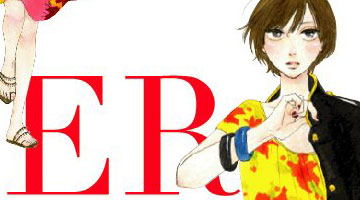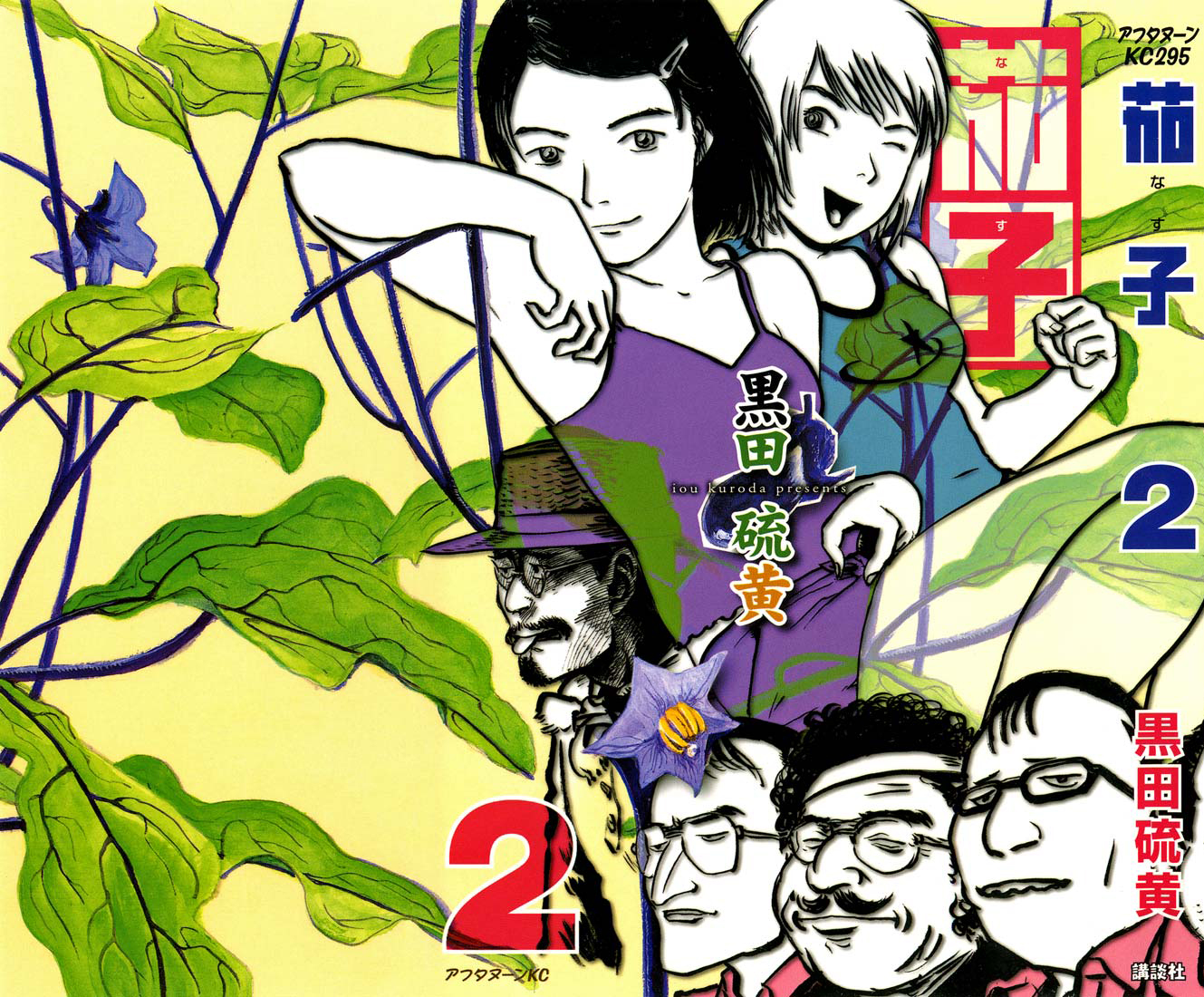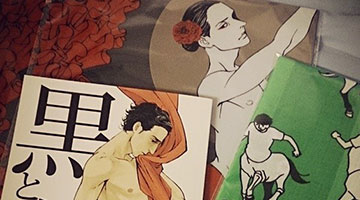Whenever I think of maids in terms of manga, I first think of Kaoru Mori’s Emma.
It is unavoidable to associate Kaoru Mori with the maid fetish. Shirley and Emma were created at a time when maid cafes were emerging in Japan. Her popularity was at its peak when the maid phenomenon hit its boom. I could assume that Emma became influential in establishing (in the most informal manner) a standard of maid aesthetics and behavior in terms of the maid fetish that was prevalent in Japanese society.
Despite this, I cannot say that Kaoru Mori is the kind who builds her story on a fetish alone. Unlike the thousands of maids that emerged in manga, Emma and Shirley felt like the real deal. In reading the manga, I realize that Kaoru Mori’s not the kind who cares for fanfare. She’s a lady who loves the world of her characters enough to make them alive as she draws every single detail with her nib. After all, she did write A Bride’s Story as well.
There’s something in the details

I am forever impressed with Kaoru Mori’s knack for details. While it seems that I have placed a spotlight on authors who have knack for the “negative” details in their scribbles (chicken scratch to others), Kaoru Mori is probably one of the few that I admire for their meticulous knack for detail.
The artistic density Kaoru Mori can place in a panel is astounding. I often have a fall out with artists who do “too much” in a panel, but Mori manages to strike a balance and draws only what needs to be seen. And there’s a lot to be seen. She draws tons of frills, laces, beads, and patterns but when you take the context of the manga, everything just fits into place.
Mori has an eye for context. I believe I have sang praises for the historical richness of Emma without her divulging too much into historical detail, and by this detail I meant the countless names and individuals that we often memorize in our high school history classes (if your teacher’s that kind of history teacher.)
Mori has a grasp of social history, a historical discipline that’s dedicated in understanding society at a particular time. The beauty of social history lies in its ability to capture the spirit of a culture at that particular point. Forget Queen Victoria. Forget Kublai Khan. It’s all about those nameless and “forgettable” people that are never captured by history. Nameless as they were, they have changed the world as a whole and has shaped our beliefs in many ways. We may think that in this day and age we have the choice about falling in love with any one. Imagine the bravery Emma and William had in admitting their love in a society that disproved of it. Mori captured this effortlessly without overloading us with the politics of their history.
I’m not exactly sure if the US editions had this, but in Japan, they released an Emma Victorian Guide which basically details life in Victorian England. Reading through this Victorian Guide is fascinating and one can appreciate the effort that Mori places in researching Victorian England just to properly contextualize Emma and Shirley. Not only does she talk about the overview of Victorian society, but she also illustrates the complexity of social life in Victorian England. It’s a wonderful book that I hope is sold as a companion someday to the Emma series. That said, it’s probably one of the most well illustrated and researched manga that I’ve read in recent years.
Of course, now, we’re looking at 19th Century Mongolia/Central Asia with A Bride’s Story. I’m quite sure that I’m not alone in amazement over her elaborate illustration of women’s clothing. More so that wicked horse riding, arrow shooting bride. In A Bride’s Story, Mori has proven that she is a consistent hardworker. She does her research well and she’s dedicated in capturing what she wishes to illustrate. I feel that Mori has graduated from just a maid fetishist to a woman who has the passion and determination to bring her story forward. I mean, she even studied how to cook Mongolian food just so she would know how it’s made. These little details, menial as they appear, actually adds richness to her story, immersing us deeper into her world.
There’s something about women
As I read through Mori’s works, I realized that she deeply loves women.
And I’m not referring to the kind of fan love or blind admiration of women. If that was the case, then Emma would have been caught in Hakim’s harem.
In reading her work, I feel that Mori has a beautiful, at times whimsical, admiration for the women she draws. Her women are often multi-faceted. Simple yet deeply layered. They’re not just characters who were drawn to live but more like living women who have been drawn. I don’t know if that makes sense but it takes a lot of love to create such lively women.
Some might think that she’s probably quite a feminist as she allows her women to rise above their challenges and yet when I read A Bride’s Story and see Amira faithfully stay with her 12 yr. old husband, I don’t see the feminist struggle. Her women are brave for their own sake but they’re not the kind that challenges a cause. At any perspective, I don’t feel like her heroines are fighting a cause.
If anything, their challenge is to fight for their happiness. And isn’t that enough? Isn’t it enough that they’re happy?
I think Mori believes that it’s more than enough. As such, her heroines will always have a happy ending.
Perhaps it’s more appropriate to say that Mori’s a romantic.
There’s something about Mori

There’s a funny irony with Kaoru Mori. While she invests so much in drawing the elaborate world of her characters, I find it amusing that she draws herself like a woman out of a jungle. In fact, when I first saw an illustration of herself, I honestly thought she was a guy.
I find it surprising that Mori is a woman. It doesn’t help that she has such an asexual name but I rarely encounter female mangaka who would slave so much for her details. It’s usually one or the other. A female mangaka would often draw something really detailed but compromise the authenticity of her story and take her own liberties as a creator, for example, Ueda Rinko or Clamp. Then there are others who would probably choose a more laidback art style but has intense understanding of the complexities of their society, for example, Est Em. But Mori’s quite exceptional to a degree that she reminds me of the laborious research and style of Makoto Yukimura for Vinland Saga and Hitoshi Iiwaki for Historie. The focus and the intensity in capturing the world of old seemed closer to a manly trait for me. Now that I think about, this same artistic and historical intensity can also be seen in Ikeda Riyoko. Still, if you think of the entire population of female mangaka out there, Mori and Ikeda are probably few.
That said, it’s hard to say that Mori is a masculine writer. In fact, I feel bad even engendering Mori when in all honesty, I just think she’s just a brilliant writer. I admire her hardwork. I admire her artistic restraint. I admire the depth of her writing. And she’s only released 3 titles. Fascinating, isn’t it? One could only wonder what other story can she write about after A Bride’s Story. Will she dabble with 1920s Japan? How about Imperial China? Africa? Explorers? India? (oh wait! She’s done a bit of that in Emma!) Will she present us another impossible love story? Will she cross boundaries to sway our hearts over and over again?

I honestly don’t know but if it will be as brilliant as the works she has already released, then I look forward to seeing more of her works.
I realize that Mori is actually someone who finds it fun doing her work. At times I read mangaka grumble over making the deadline or losing track of their story. I sometimes read them feeling “obligated” to continue their story to make the fans happy. However, I don’t exactly feel the same with Mori. She’s very enthusiastic
In fact, I find her a bit selfish for choosing to write about complicated worlds we can hardly relate to and yet… I find it admirable how she manages to write a story that we can connect to.
The Reading List
All of these titles are available in English hence there’s no excuse that you can’t read or get them.
Extra! Extra!
 I’m probably doing a feature on this someday but I realized that I didn’t have the spices to make them. ;_;
I’m probably doing a feature on this someday but I realized that I didn’t have the spices to make them. ;_;
Anyway, Comic Natalie did a feature on the food cooked in A Bride’s Story, with Mori-sensei demonstrating how to cook the dishes featured in Volume Three. They also did a feature on the research and drawing process of Mori-sensei A Bride’s Story. It’s a fascinating look at her discipline.
Post Script
Dear world, I didn’t think I would actually live through 6 spotlights for this year. I was aiming for a monthly thing but doing it halfway is a lot better with just one. I’m very grateful that I managed to do something than nothing. Here’s to writing 12 next year! >w<)9






Does anyone know what kind of pen she uses to draw her manga?
This is a very interesting post. I agree with you on the details on Mori’s work as well as how she potrays life in central Asia. Also on how her work is about those nameless forgettable characters in history, who didn’t want to change a cause, their circumstances just wasn’t as simple as others around them.
Really hoping she will work on a whole different cultural background for her next work.
Keep the reviews coming! 🙂